Earth and space with the ISS
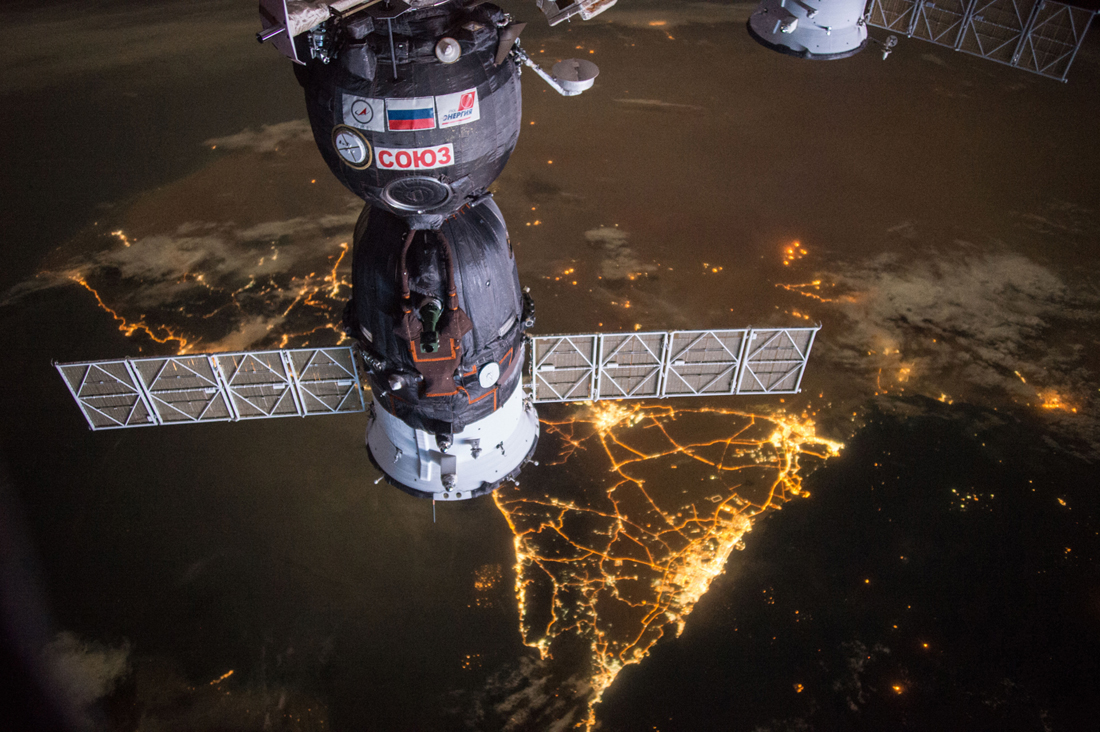
The International Space Station is a laboratory and research platform in near-earth orbit, it is a powerful outpost of humanity in space, but it is also a real find for the photographer. Such perspectives, lighting conditions and opportunities for creative self-realization are not available anywhere else. This is partly why cosmonauts and astronauts take a camera a couple of times a week and fly to the porthole and click off a few thousand photographs.
For these purposes, even a special module "Dome" has been created, which opens an overview of all 360 degrees in the lower hemisphere of the station.
Why do I need a dome
The module is necessary to facilitate the management of the manipulator, which docked modules, and now are joined by cargo spacecraft of the United States and Japan.
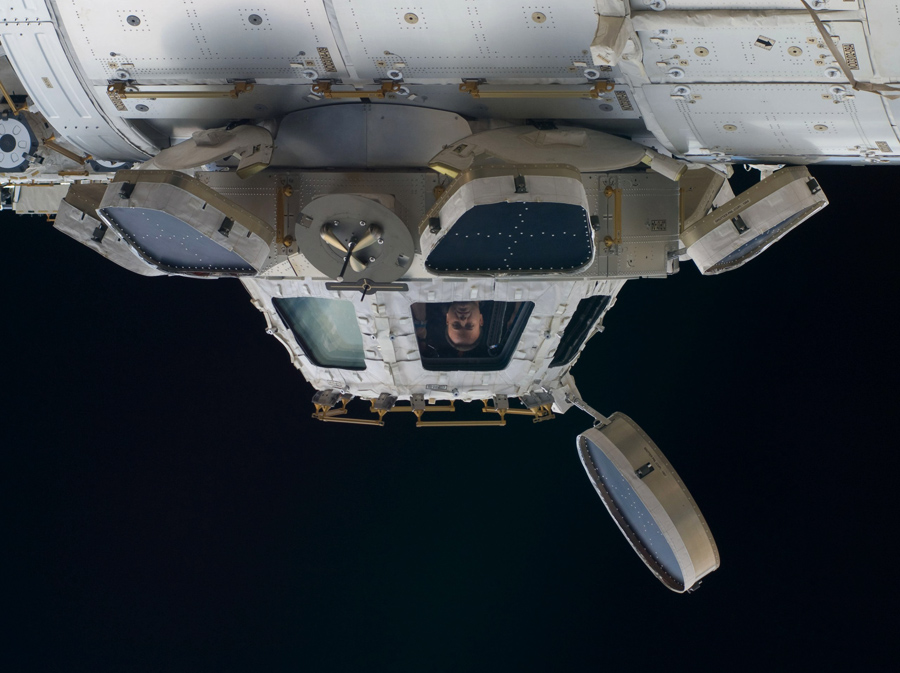
Recently, on this module cosmonaut Mikhail Kornienko led a tour. We met a bit when we talked to the ISS .
')
Of the hundreds and thousands of images taken on the ISS, instagrams and tweeters then get a few, and everything else is stored in the bottomless digital archives of NASA. If you dig in them thoroughly, you can find a lot of interesting things.
All these pictures in a size suitable for placement on the desktop can be found here .
Mars is beautiful after the rain ... But no, this is Australia.
Conservation area Neil Junction in South Australia.
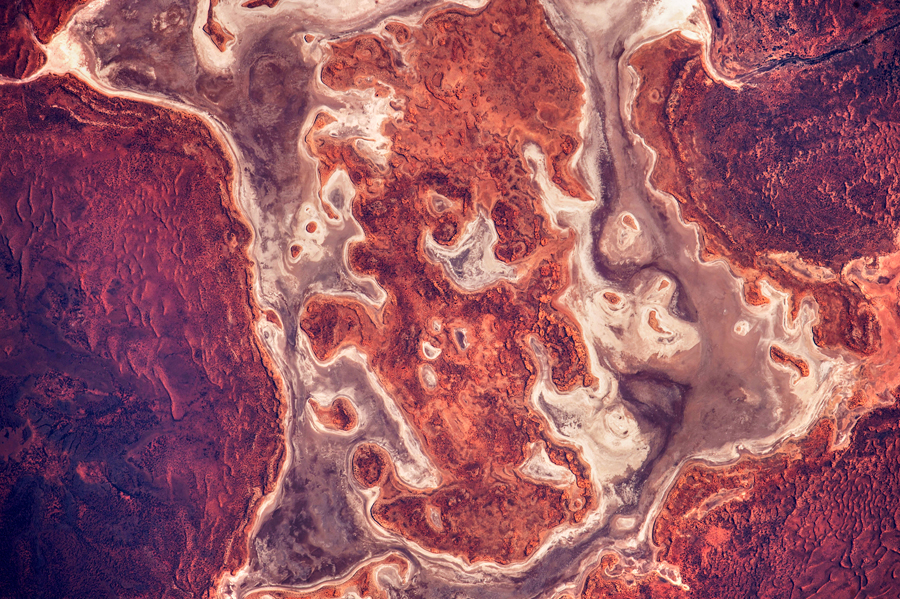
Australia is harder than it looks.
The intricate lace of the Creswell Creek River, which flows into the drying desert Tarrabul Lake in Australia’s Northern Territory.
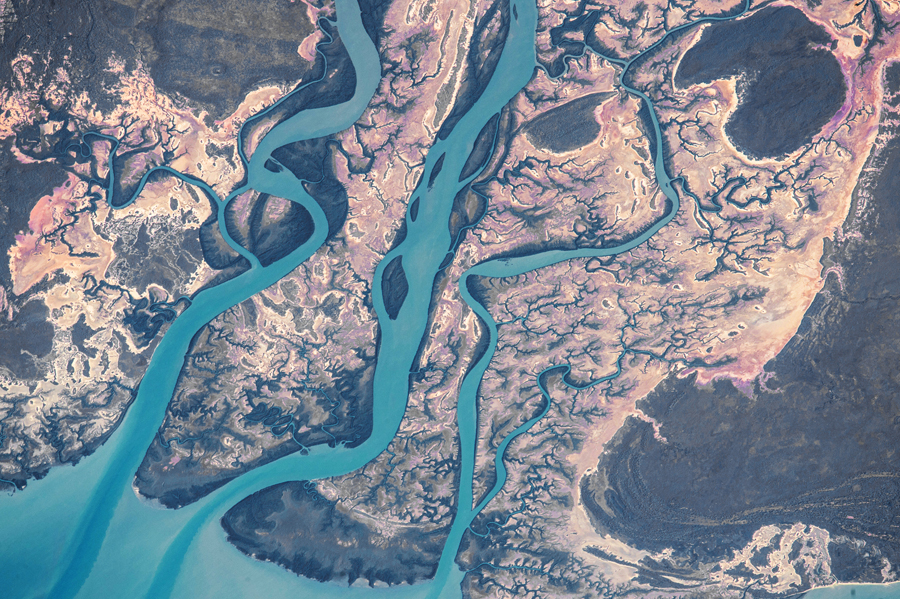
How to get a super typing? Take the Pacific Ocean and gently mix the "Union."
The ISS flies over Soudelor's super warmth in the western Pacific on August 5, 2015.
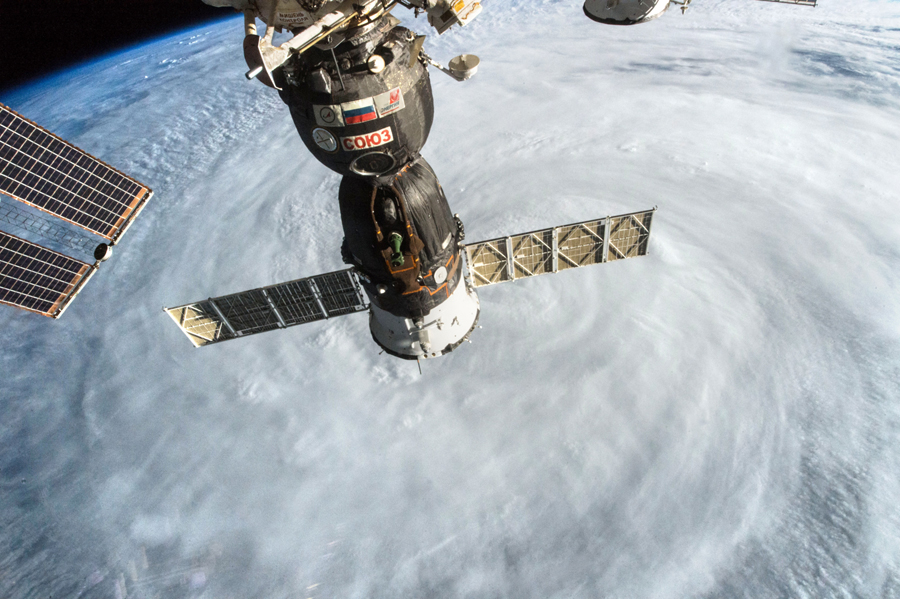
The center of the Milky Way galaxy, view from space.
Panorama of interstellar clouds, swirling near the center of the galaxy.
From the station, the stars are visible as well as anywhere else on Earth. But to shoot such a picture, it was nevertheless required to use a high-aperture lens, set the light sensitivity to 8000, and shoot with a shutter speed of 4 seconds. Through the eyes it is unlikely to be seen even from space.
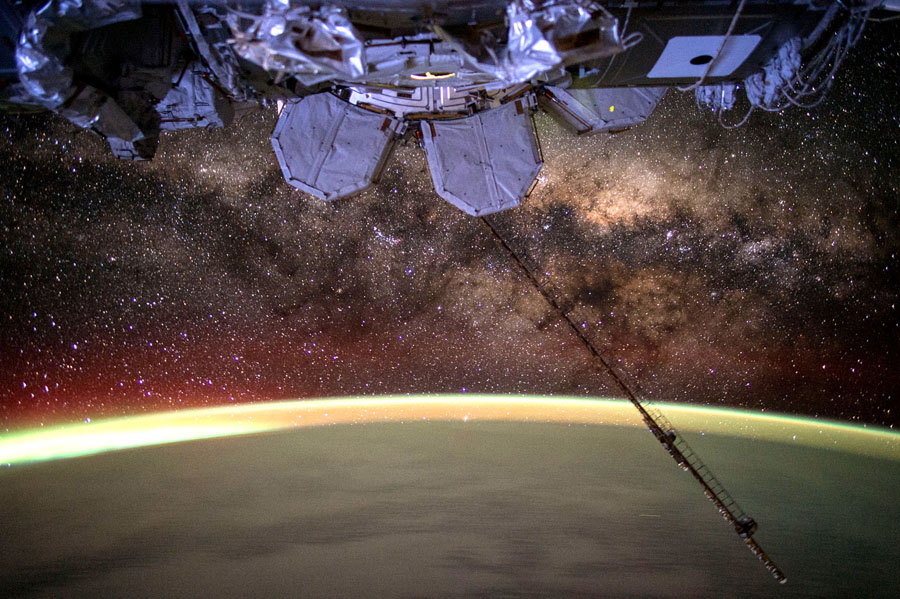
Burning lakes of New Mexico.
When the sun casts its highlight on Earth, the water flashes white light. Lakes in the southwest of the USA.
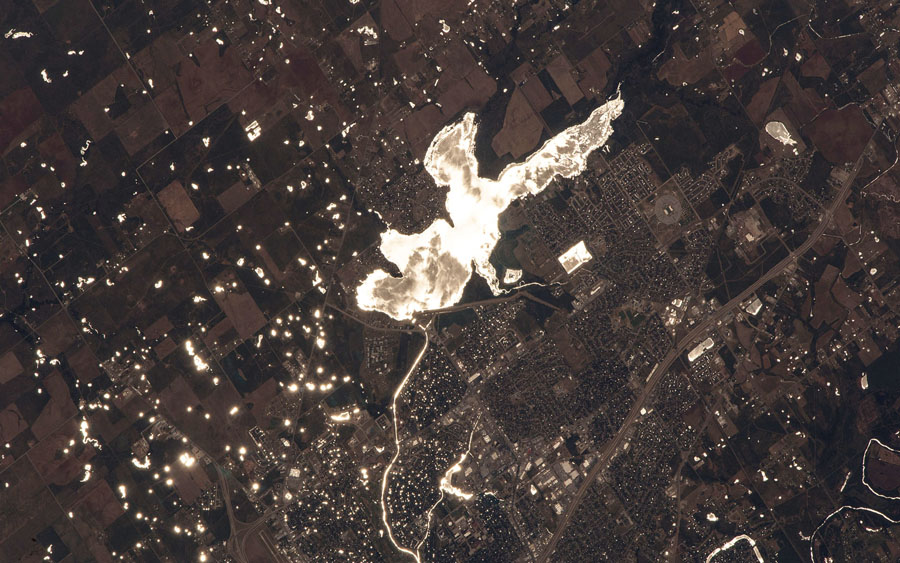
ISS is a very inconvenient place to work: looked out the window and hung for an hour.
Japanese cargo spacecraft HTV-5 Kounotori against the background of the Pacific Ocean, the lights of New Zealand, and the pre-dawn sky. Among the stars, the "Morning Star" shines brightest of all - the planet Venus.

The confrontation of technology and the desert.
Irrigated agricultural land in northwestern Saudi Arabia in the Tabuk region.

Sunrise Pleiades over the Pacific Ocean July 29, 2015.
On the right you can see the Canadian robot manipulator Dextre.

Highlands Zagros.
Northeastern Iraq, view from the International Space Station.
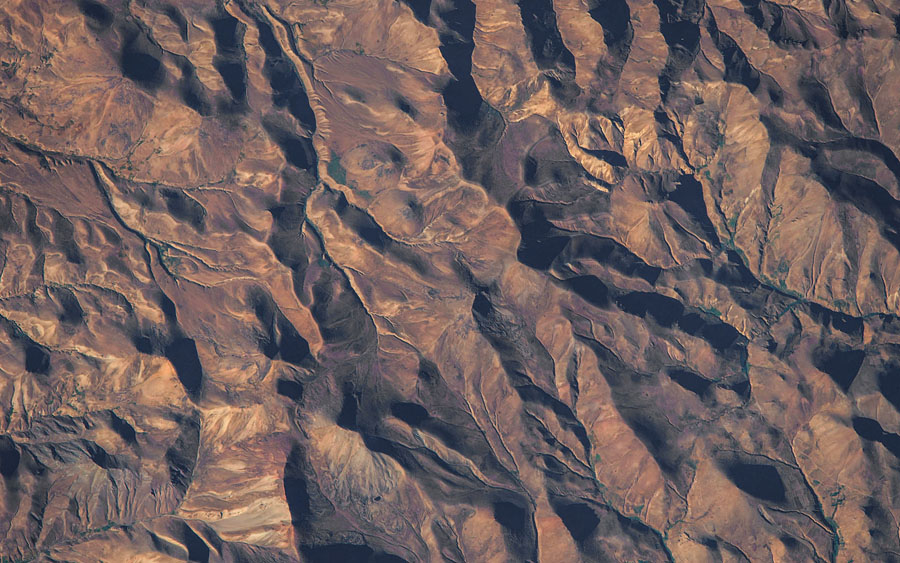
The moon and the atmosphere of the Earth.
Many probably know the feeling when the Moon or the Sun in the sky become larger, approaching the horizon. This illusion even came up with an explanation: as if the atmosphere works like a magnifying glass and “brings” the luminaries closer.
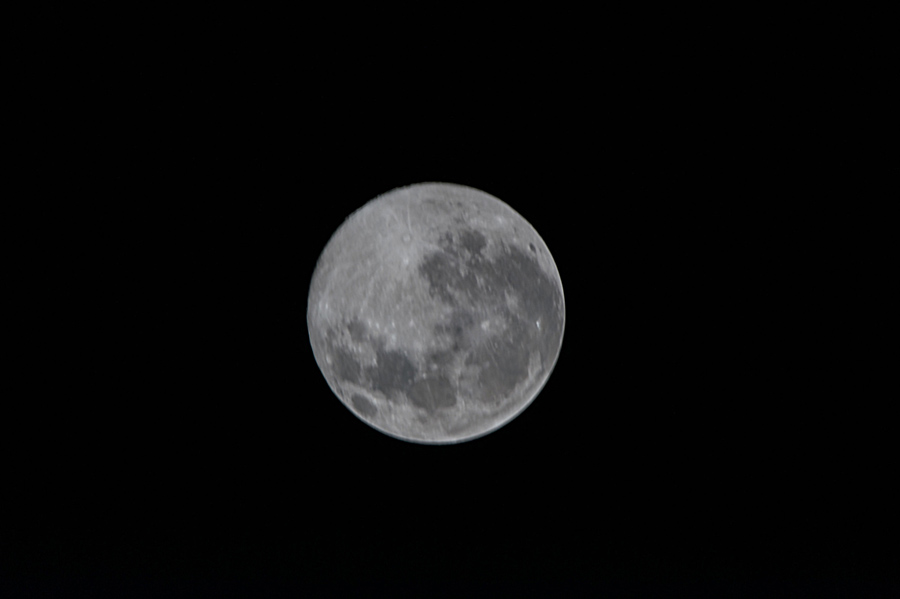
In fact, this illusion is solely a product of our vision and features of the perception of reality by our brain. Just when objects are in the sky, we have nothing to compare with their apparent size and they seem small and lonely.
The atmosphere also introduces a distortion, but of a completely different nature. The effect of atmospheric refraction can be seen in the shooting from the International Space Station. The earth's atmosphere "crushes" the moon, but does not increase it.
On animation: Moonset on the full moon on July 31, 2015. View from the ISS.

The night retreats from the Andes.
A look at the longest mountain range on Earth from a height of 406 kilometers.
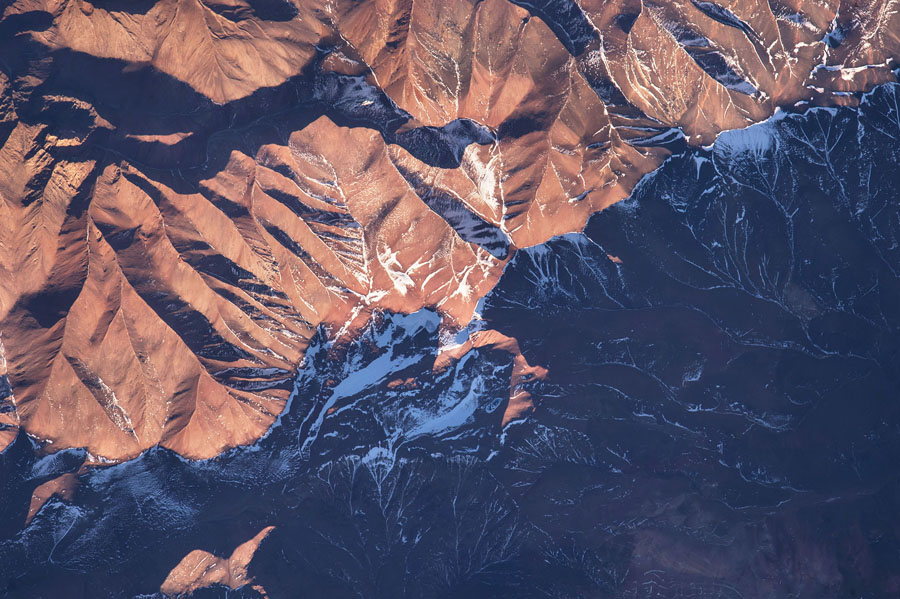
You have a Piton de Nezh boiling.
The clouds are illuminated by the orange sunset sun over the extinct volcano Piton de Nezh on Reunion Island in the western Indian Ocean.
The island is a region of France, although it is located six hundred kilometers east of Madagascar. At the bottom of the picture with the ISS, you can see the city of Saint-Pierre and Saint-Denis.
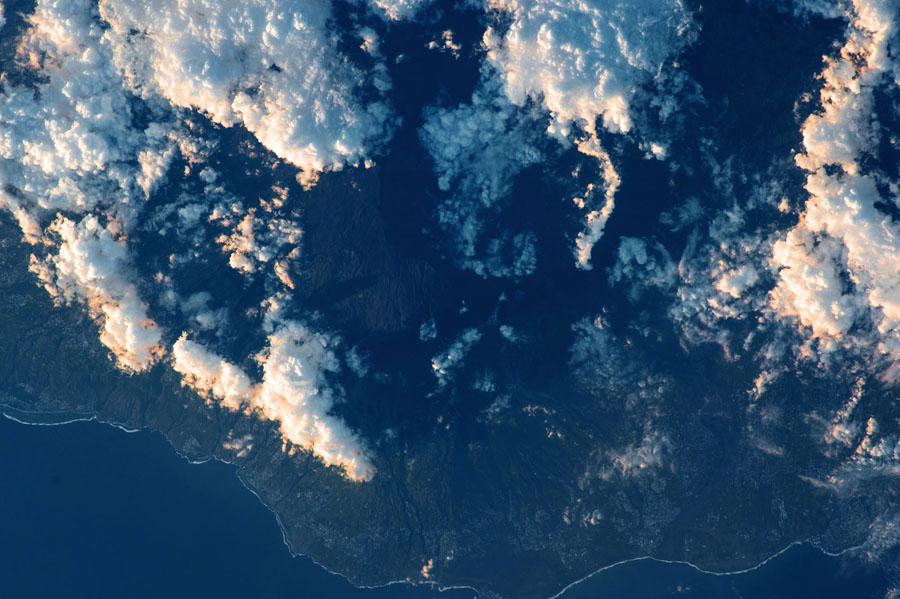
Sunset over the Pacific Ocean.
Shooting from the ISS allows you to see how the process of the sunset of the moon over the horizon line looks. You can see how the atmosphere reduces the brightness of the natural satellite of Earth, until it disappears completely.
No other light sources are distracting from the surface - the survey was conducted over the deserted expanses of the Pacific Ocean. Only the stars are visible except the moon, but the most attentive glance will be able to see the echoes of the aurora.
The shooting took place on August 21, 2015.
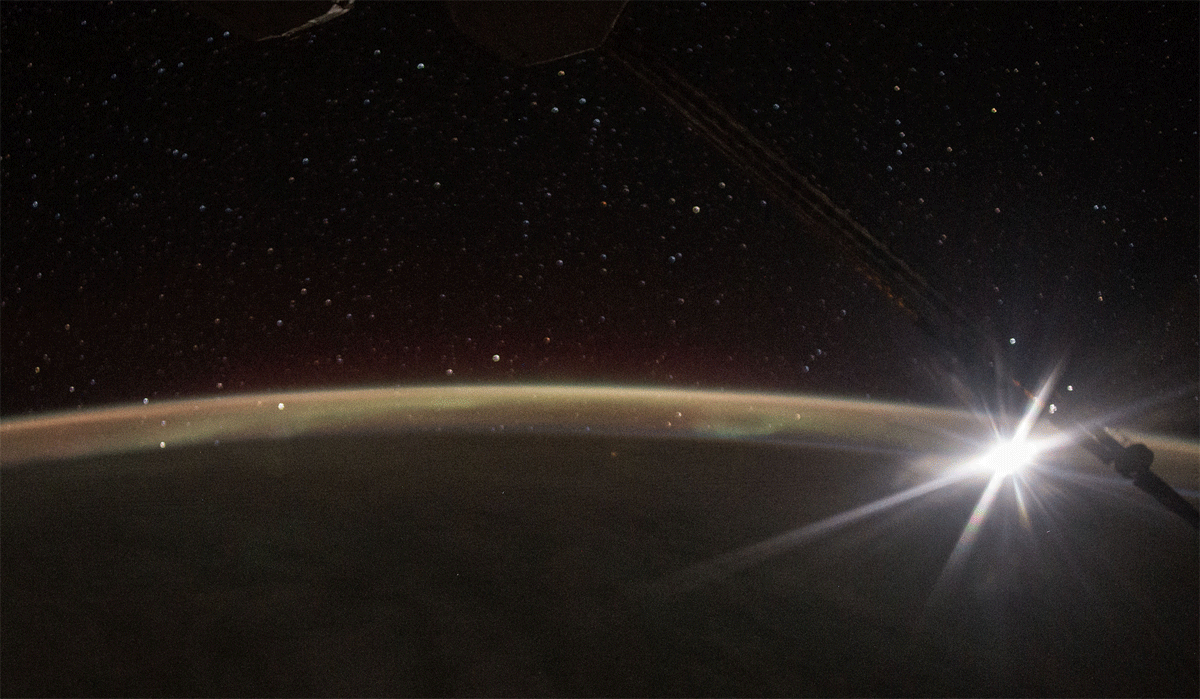
Touching the Earth.
The moment of operation of the engines of soft landing of the descent capsule of the Soyuz TMA-16M spacecraft - photo from a helicopter. A successful landing in Kazakhstan took place on September 12 at 3:51 Moscow time. Onboard were: Gennady Padalka (Russia), Andreas Mogensen (Denmark), Aydin Ayymbetov (Kazakhstan).
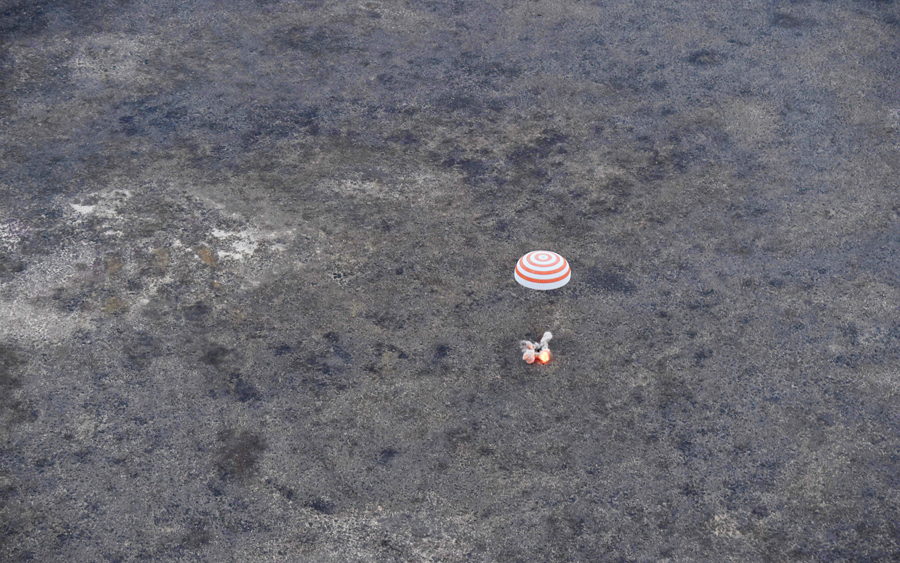
Source: https://habr.com/ru/post/368439/
All Articles